
Visiting Das Aves Park in Foz do Iguazu {EN/ES} Visitando el parque Das Aves en Foz do Iguazu
When I visited Parque das Aves in Foz do Iguaçu it was an incredible and educational experience. This place, located in the heart of the Brazilian Atlantic Forest, is much more than just a bird park. It is a sanctuary and conservation center that works hard to protect and preserve numerous species of birds, many of which are endangered.

Upon arriving at the park, I was greeted by an exuberant and lively environment. The Parque das Aves extends over a vast area of tropical forest, offering visitors the opportunity to enter a natural environment and observe up close the diversity of birds that live there. From the very first moment, I could feel the dedication and love that the park's team puts into their work.


The Parque das Aves is dedicated to the conservation of the local fauna and flora, and its main mission is the protection of the birds of the Atlantic Forest. In addition, they carry out captive breeding programs for endangered species and work on the reintroduction of these birds to their natural habitat. They also participate in research and environmental education projects, raising awareness about the importance of conserving biodiversity.

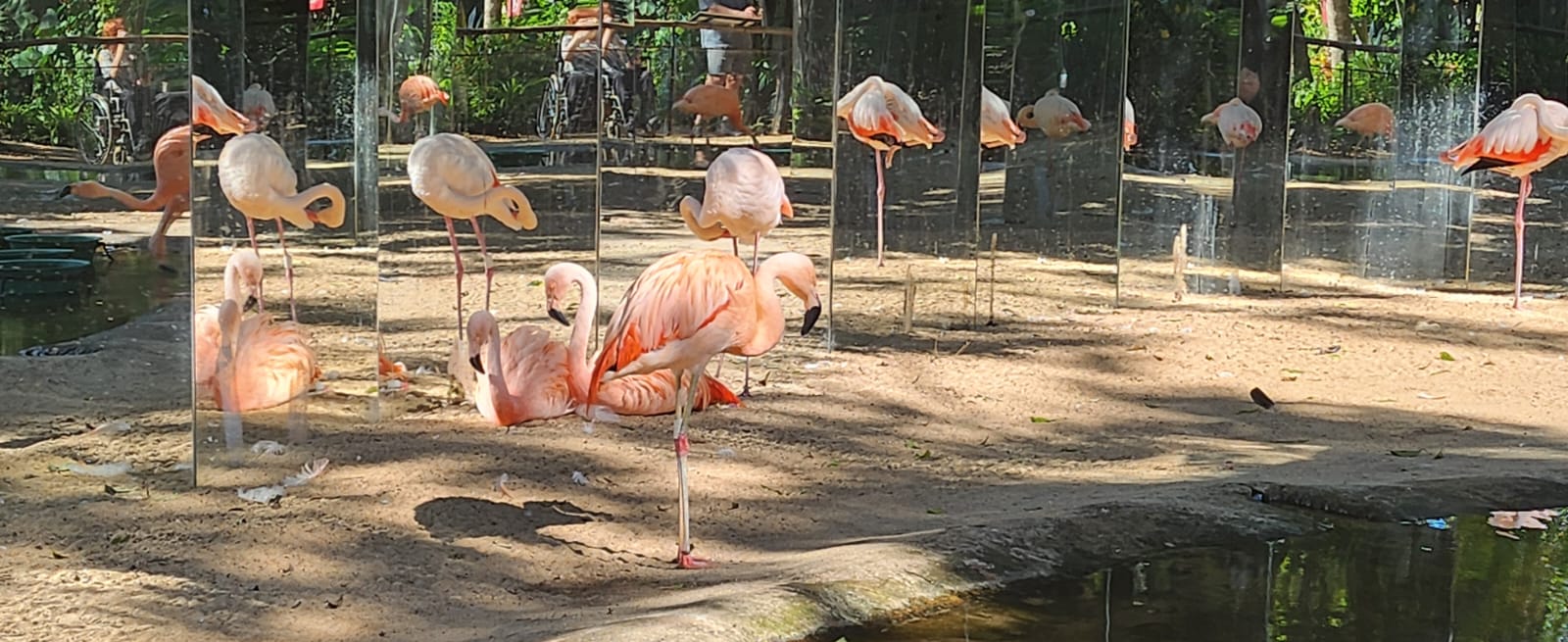
During my tour, I had the opportunity to see an incredible variety of birds. Among the first species I encountered were the macaws. These majestic birds, with their brightly colored feathers and playful behavior, are truly fascinating. I was amazed to see them flying freely in the park's giant aviaries, designed to replicate their natural habitat.



Another species that impressed me was the toucan. With their characteristic large beak and vibrant colors, toucans are one of South America's most iconic birds. It was a unique experience to see them up close and learn about their behavior and feeding habits. I was also able to see several types of parrots and cockatoos, whose abilities to imitate human sounds brought more than one smile to my face.


One of the most special areas of the park is the birds of prey aviary. Here, I was able to observe hawks, eagles and owls. These mighty hunters of the sky have a particular charm, and it was fascinating to learn about their hunting techniques and their role in the ecosystem. The park also has an area dedicated to flamingos, where these elegant pink birds gracefully parade on the water, creating a dreamlike scene.
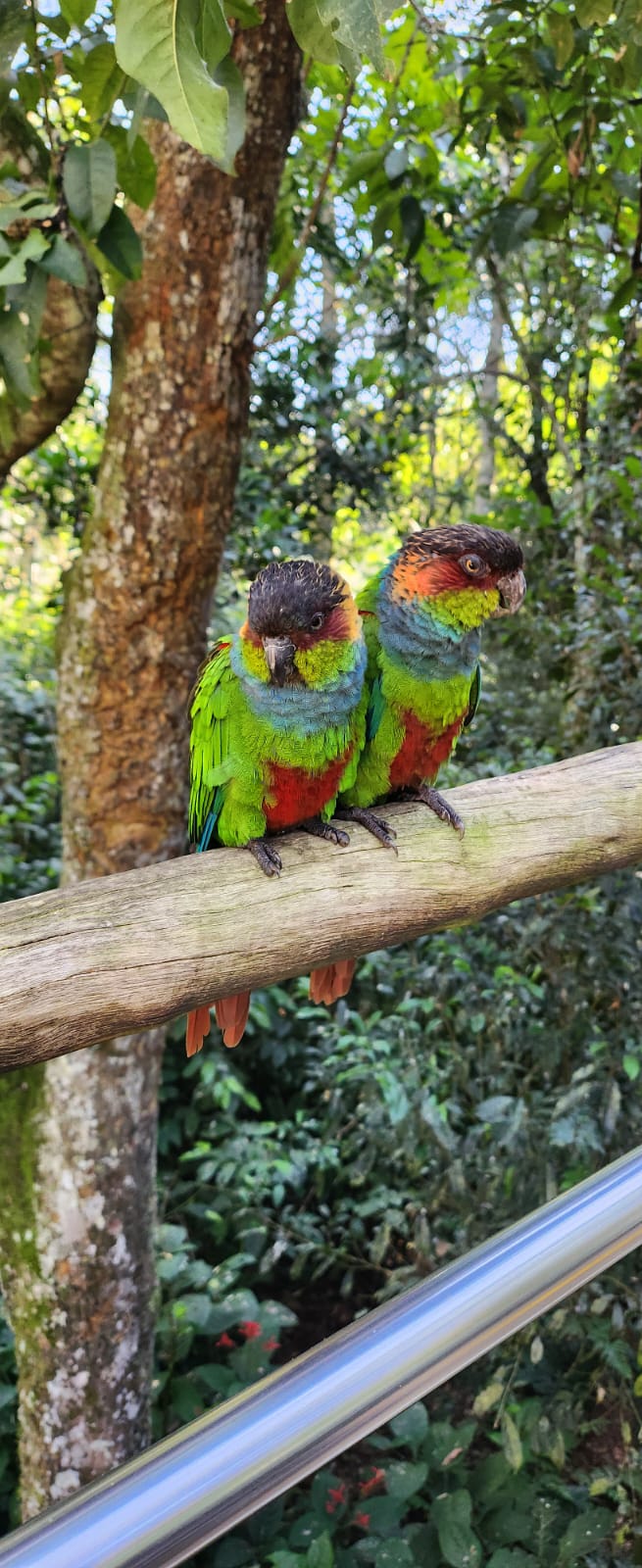
In addition to the birds, the Parque das Aves is home to other animals and plants that are part of the Atlantic Forest ecosystem. There are butterflies, snakes and small mammals that also play an important role in the biodiversity of the place. Learning about the interconnection between these species and their environment was an invaluable lesson.
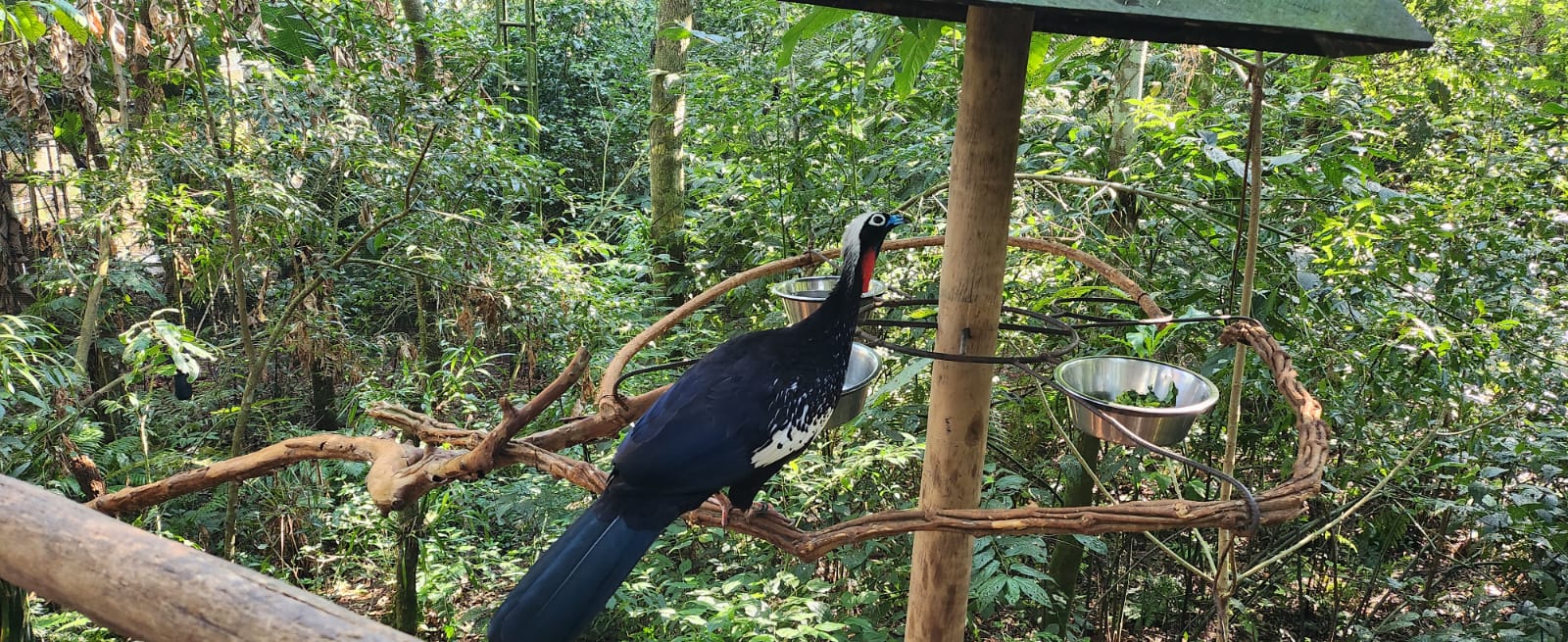


One of the things that impressed me most about the park is its commitment to environmental education. During my visit, I participated in several talks and presentations given by the park's biologists and caretakers. They explained in detail their conservation efforts and how each visitor can contribute to the protection of the environment. These talks were very informative and made me reflect on the importance of taking care of our planet.
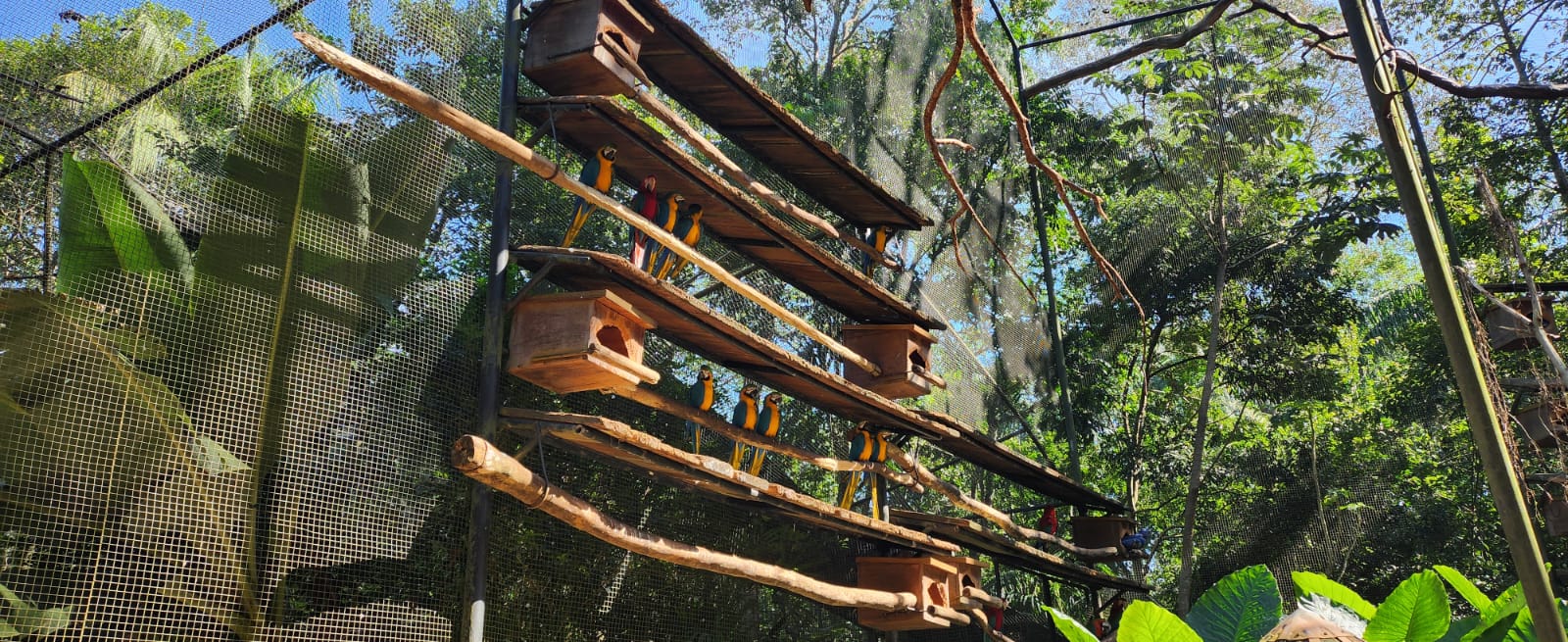
Parque das Aves is not only concerned with the conservation of the species, but also with the welfare of the birds under its care. Each aviary is meticulously designed to provide as natural an environment as possible. The birds have space to fly, nest and socialize, which contributes to their health and well-being. They are also provided with a balanced diet and environmental enrichment to keep them active and happy.
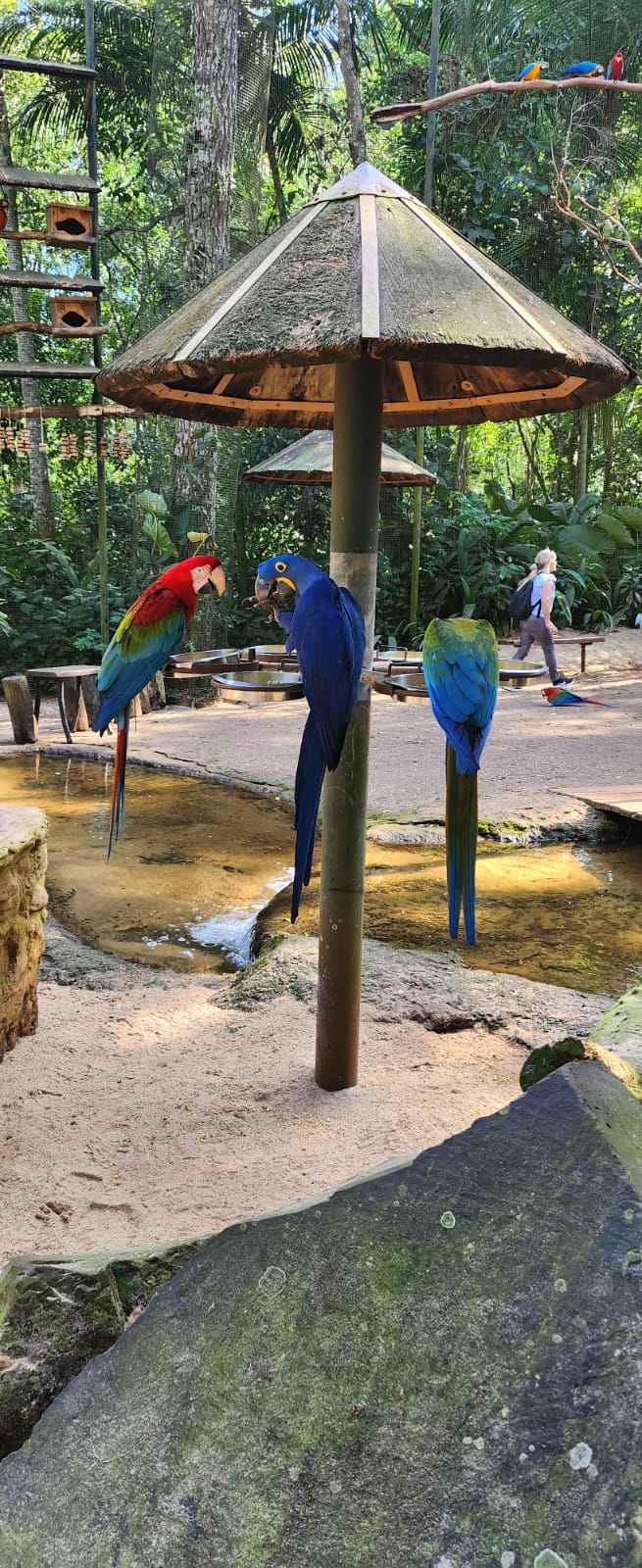
One of the most memorable experiences of my visit was entering the hummingbird aviary. These small birds, known for their speed and ability to fly in all directions, are a wonder of nature. Seeing them up close, as they fed on the flowers and displayed their iridescent feathers in the sun, was simply magical.

Parque das Aves is also dedicated to the reintroduction of species into their natural habitat. Thanks to their captive breeding programs, they have been able to breed and release birds that now fly free in the Atlantic Forest. This effort is fundamental to the recovery of threatened bird populations and is a testament to the positive impact that conservation can have.

At the end of my visit, I came away with a deep appreciation for the work that Parque das Aves does. Not only does this place offer visitors the opportunity to see and learn about an incredible variety of birds, but it also plays a crucial role in protecting and preserving biodiversity. My experience at the park was enriching and left me with great admiration for all those who dedicate their lives to caring for these beautiful creatures.
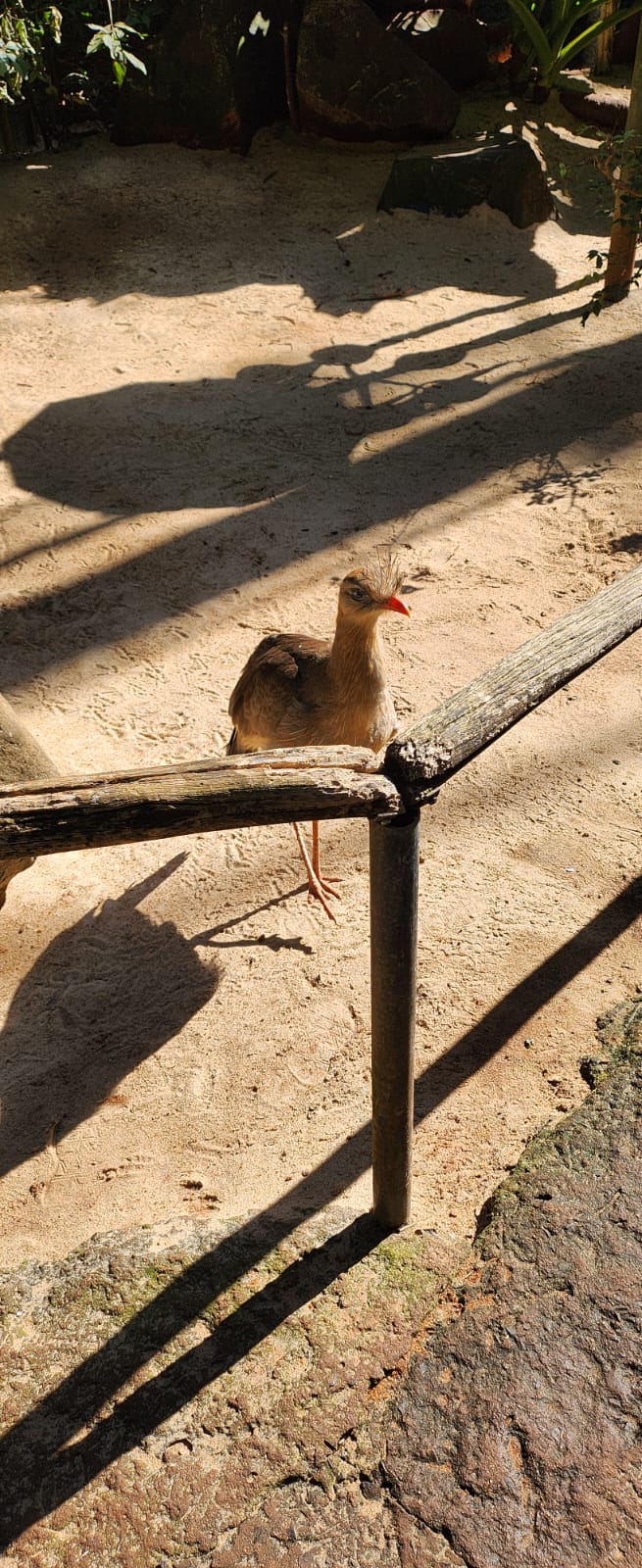
SPANISH VERSION (click here!)
Cuando visite al Parque das Aves en Foz do Iguaçu fue una experiencia increíble y educativa. Este lugar, ubicado en el corazón de la Mata Atlántica brasileña, es mucho más que un simple parque de aves. Es un santuario y un centro de conservación que trabaja arduamente para proteger y preservar numerosas especies de aves, muchas de las cuales están en peligro de extinción.

Al llegar al parque, fui recibido por un ambiente exuberante y lleno de vida. El Parque das Aves se extiende por una vasta área de bosque tropical, ofreciendo a los visitantes la oportunidad de adentrarse en un entorno natural y observar de cerca la diversidad de aves que habitan allí. Desde el primer momento, pude sentir la dedicación y el amor que el equipo del parque pone en su trabajo.


El Parque das Aves se dedica a la conservación de la fauna y flora locales, y su misión principal es la protección de las aves de la Mata Atlántica. Además, llevan a cabo programas de reproducción en cautiverio para especies amenazadas y trabajan en la reintroducción de estas aves a su hábitat natural. También participan en proyectos de investigación y educación ambiental, creando conciencia sobre la importancia de conservar la biodiversidad.


Durante mi recorrido, tuve la oportunidad de ver una increíble variedad de aves. Entre las primeras especies que encontré estaban los guacamayos. Estos majestuosos pájaros, con sus plumas de colores brillantes y su comportamiento juguetón, son verdaderamente fascinantes. Me quedé asombrado al verlos volar libremente en los aviarios gigantes del parque, diseñados para replicar su hábitat natural.



Otra especie que me impresionó fue el tucán. Con su característico pico grande y colores vibrantes, los tucanes son una de las aves más emblemáticas de Sudamérica. Fue una experiencia única verlos de cerca y aprender sobre su comportamiento y hábitos alimenticios. También pude ver varios tipos de loros y cacatúas, cuyas habilidades para imitar sonidos humanos me arrancaron más de una sonrisa.


Una de las áreas más especiales del parque es el aviario de las aves rapaces. Aquí, pude observar halcones, águilas y búhos. Estos poderosos cazadores del cielo tienen un encanto particular, y fue fascinante aprender sobre sus técnicas de caza y su rol en el ecosistema. El parque también cuenta con una zona dedicada a los flamencos, donde estas elegantes aves rosadas desfilan grácilmente en el agua, creando una escena de ensueño.

Además de las aves, el Parque das Aves alberga otros animales y plantas que forman parte del ecosistema de la Mata Atlántica. Hay mariposas, serpientes y pequeños mamíferos que también juegan un papel importante en la biodiversidad del lugar. Aprender sobre la interconexión entre estas especies y su entorno fue una lección invaluable.



Una de las cosas que más me impresionó del parque es su compromiso con la educación ambiental. Durante mi visita, participé en varias charlas y presentaciones ofrecidas por los biólogos y cuidadores del parque. Ellos explicaron detalladamente los esfuerzos de conservación que realizan y cómo cada visitante puede contribuir a la protección del medio ambiente. Estas charlas fueron muy informativas y me hicieron reflexionar sobre la importancia de cuidar nuestro planeta.

El Parque das Aves no solo se preocupa por la conservación de las especies, sino también por el bienestar de las aves bajo su cuidado. Cada aviario está diseñado meticulosamente para ofrecer un ambiente lo más natural posible. Las aves tienen espacio para volar, anidar y socializar, lo que contribuye a su salud y bienestar. También se les proporciona una dieta balanceada y enriquecimiento ambiental para mantenerlas activas y felices.

Una de las experiencias más memorables de mi visita fue entrar en el aviario de los colibríes. Estos pequeños pájaros, conocidos por su rapidez y su capacidad de volar en todas direcciones, son una maravilla de la naturaleza. Verlos de cerca, mientras se alimentaban de las flores y mostraban sus plumas iridiscentes bajo el sol, fue simplemente mágico.

El Parque das Aves también se dedica a la reintroducción de especies en su hábitat natural. Gracias a sus programas de reproducción en cautiverio, han logrado criar y liberar aves que ahora vuelan libres en la Mata Atlántica. Este esfuerzo es fundamental para la recuperación de poblaciones de aves amenazadas y es un testimonio del impacto positivo que la conservación puede tener.

Al final de mi visita, me fui con una profunda apreciación por el trabajo que realiza el Parque das Aves. Este lugar no solo ofrece a los visitantes la oportunidad de ver y aprender sobre una increíble variedad de aves, sino que también juega un papel crucial en la protección y preservación de la biodiversidad. Mi experiencia en el parque fue enriquecedora y me dejó una gran admiración por todos los que dedican su vida a cuidar de estas hermosas criaturas.












Comments